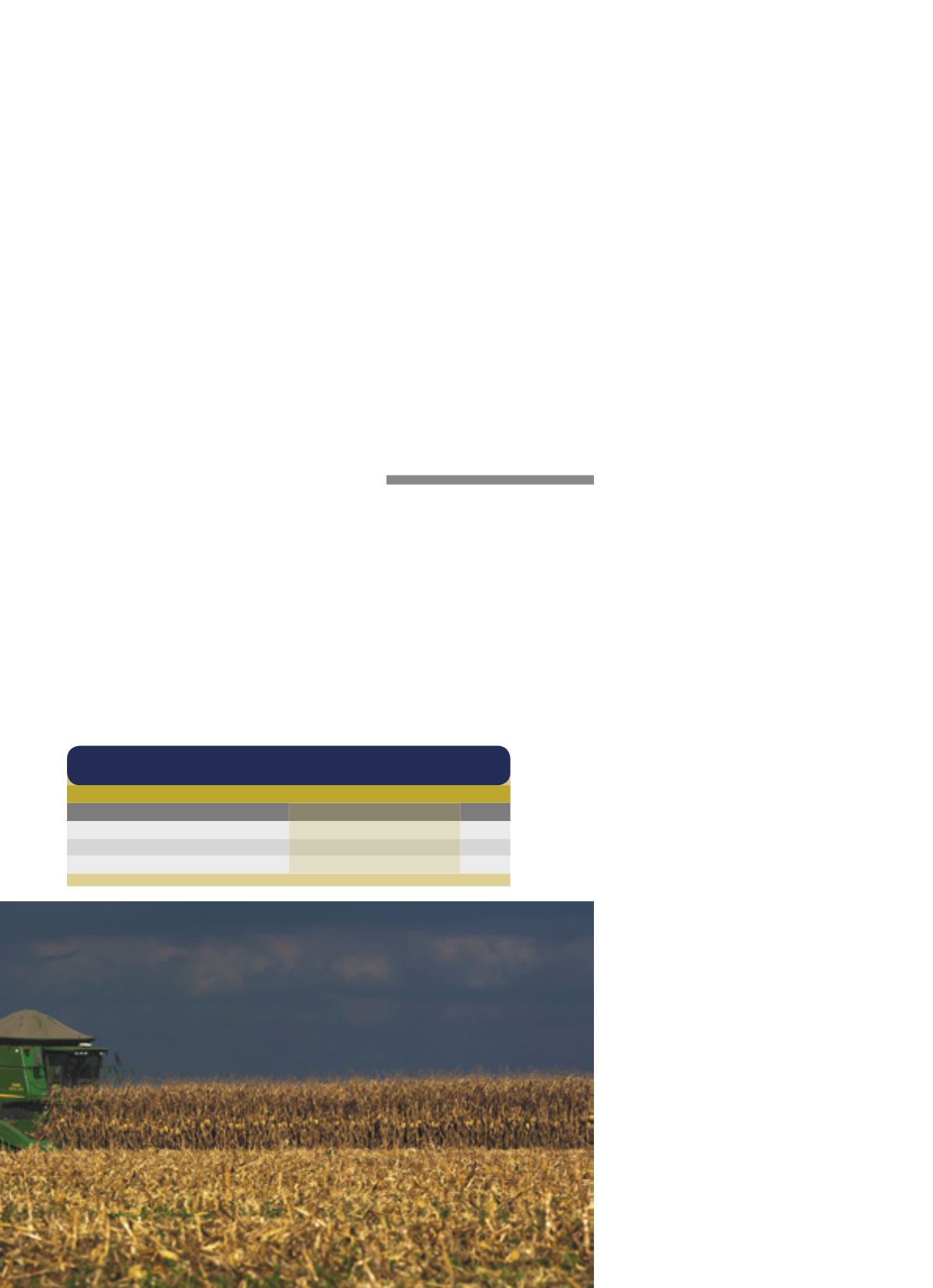
Silvio Ávila
24
The
cereal
Corn grown inWestern
Bahiamade a speedy
recovery in the 2016/17
growing season, but is still
distant fromthe potential
in the region
Since the 1990s, the Brazilian Northeast, relevant corn consumer,
has had a new and not distant away supplier of the cereal, a basic com-
ponent in human food and livestock feed. The Western Bahia region,
with excellent conditions for this purpose, which once devoted 265
thousand hectares to the crop, with an output of 2.3 million tons per
growing season at the beginning of the first decade, making shipments
abroad viable. Several factors had an influence on the lower region-
al supply, which made a good recovery in the 2016/17 growing sea-
son, but is not yet consistent (the planted area should decrease in the
coming season) and not only could but should make strides in light
of the existing potential, say sources from the agro-
nomic sector.
Unfavorable weather conditions over the past
years were major factors that interfered with the
crop, very susceptible to dry weather conditions,
along with the outbreaks of a pest that up to that
time was viewed as a minor problem, the maize leaf-
hopper, which has a preference for irrigated fields.
In parallel, the crop that has just come to a close,
with low local productivity and national surplus, was badly harmed by
the low prices (R$ 22 to R$ 23 per sack). Furthermore, the crop suf-
fers from the lack of a guaranteed future market, from a warehousing
system that provides access to public commercialization mechanisms
Cropoccupies 7%
of the areaof the
productivematrix
andcouldgrow
further
and from government incentive towards ex-
panding the consumption of the crop pro-
duced nearby, although judging from the
production conditions, the production cost
of the summer crop is slightly higher.
Upon analyzing this situation, farmer An-
tonio Grespan, pioneer producer of the crop
in the region, in his capacity as agronom-
ic engineer and member of the Technical
Council of the Bahia Association of Farmers
and Irrigators (Aiba) and of the Corn Sec-
toral Chamber, maintains that, for these
reasons, the size of the crop in the region
remains far below its real capacity and be-
low the achievable size. Despite its status
as a major crop in the West, the area devot-
ed to it now represents no more than 7% of
the total, considering that it was once twice
as much and should, in his view, reach one
third or at least a quarter of the total region-
al productive matrix.
To this end, Grespan justifies the relevance
of the cereal for the sake of revenue stability
in the desired picture of crop diversification,
whilst taking advantage of benefits provided
by the agronomic plan, as it is of fundamen-
tal importance in direct planting, like grass
that gives origin to abundant organic matter
and contributes a lot towards this basic sus-
tainable agricultural practice, besides break-
ing the cycle of diseases and pests. Final-
ly, although a reduction in planted area was
foreseen for the 2017/18 growing season, on
account of the portrayed aspects, the size
of the projected crop is close to the previ-
ous year, through the initial perspective of
reaching the highest productivity rates ever
achieved throughout the region (above 160
kg/ha), in light of the available technology
and local conditions.
Grespan recalls that the region in West-
ern Bahia stands out, in particular, for the
development of the crop. Its altitude is good
for the crop (800 to 900 meters), sun and cli-
mate are favorable, as well as the strategic
location for serving the Northeast, besides
corroborating, along with its productive po-
tential, a superior quality of the product.
Northeastern
Fonte:
MDIC/AliceWEb2-Aiba
– * Exportação até setembro.
longo alcance
far away
Produção e exportação de milho na região
Ano
Produção (mil t)
Exportação (mil t)
%
2015
1.799
105
6
2016
932
23
2
2017*
1.404
0
0


